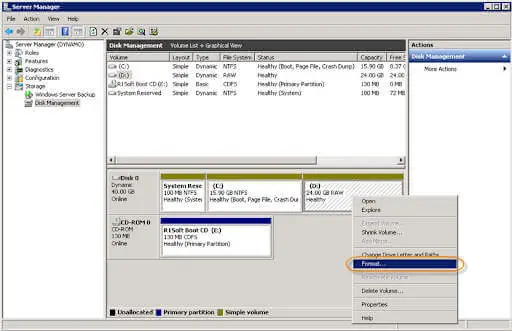Dynamic Volume is any volume created using the Disk Management portion of the Computer Management administrative tool.
You can only create dynamic volumes on dynamic disks.

Types of dynamic volumes include the following:
Simple volumes
A Simple Volume is one or more contiguous blocks of free disk space on a single physical disk. You can extend simple volumes to include additional free disk space from the initial drive or from other drives, forming a spanned volume. Simple volumes have no fault tolerance but can be mirrored to form mirrored volumes.
Spanned volumes
A Spanned Volume is a volume created using the Disk Management portion of the Computer Management tool that is made up of free space from more than one physical disk. You can extend spanned volumes by adding additional free space from other physical disks. Spanned volumes must be created on dynamic disks. They are not fault-tolerant and cannot be mirrored.
Striped volumes
A Striped Volume is a volume created using the Disk Management portion of the Computer Management tool that stores its data across two or more physical disks in stripes.
Striping allocates data alternately and evenly across multiple physical disks. Striped volumes must be created on dynamic disks. They are not fault-tolerant and cannot be mirrored or extended.
Mirrored volumes
A Mirrored Volume is a volume created with the Disk Management tool that duplicates its data on two physical disks to provide fault tolerance. If one physical disk fails, the system continues to operate using the second disk.
Mirrored volumes perform read operations more slowly than RAID-5 volumes but execute write operations more quickly. You cannot extend mirrored volumes, and you must create them on dynamic disks. Disk mirroring is equivalent to RAID 1.
Raid-5 volumes
RAID-5 Volume is a volume created with the Disk Management portion of the Computer Management tool that stores its data with parity information across multiple physical disks. Data is stored using striping, which places data and parity information alternately and evenly across multiple disks. Read the main article.